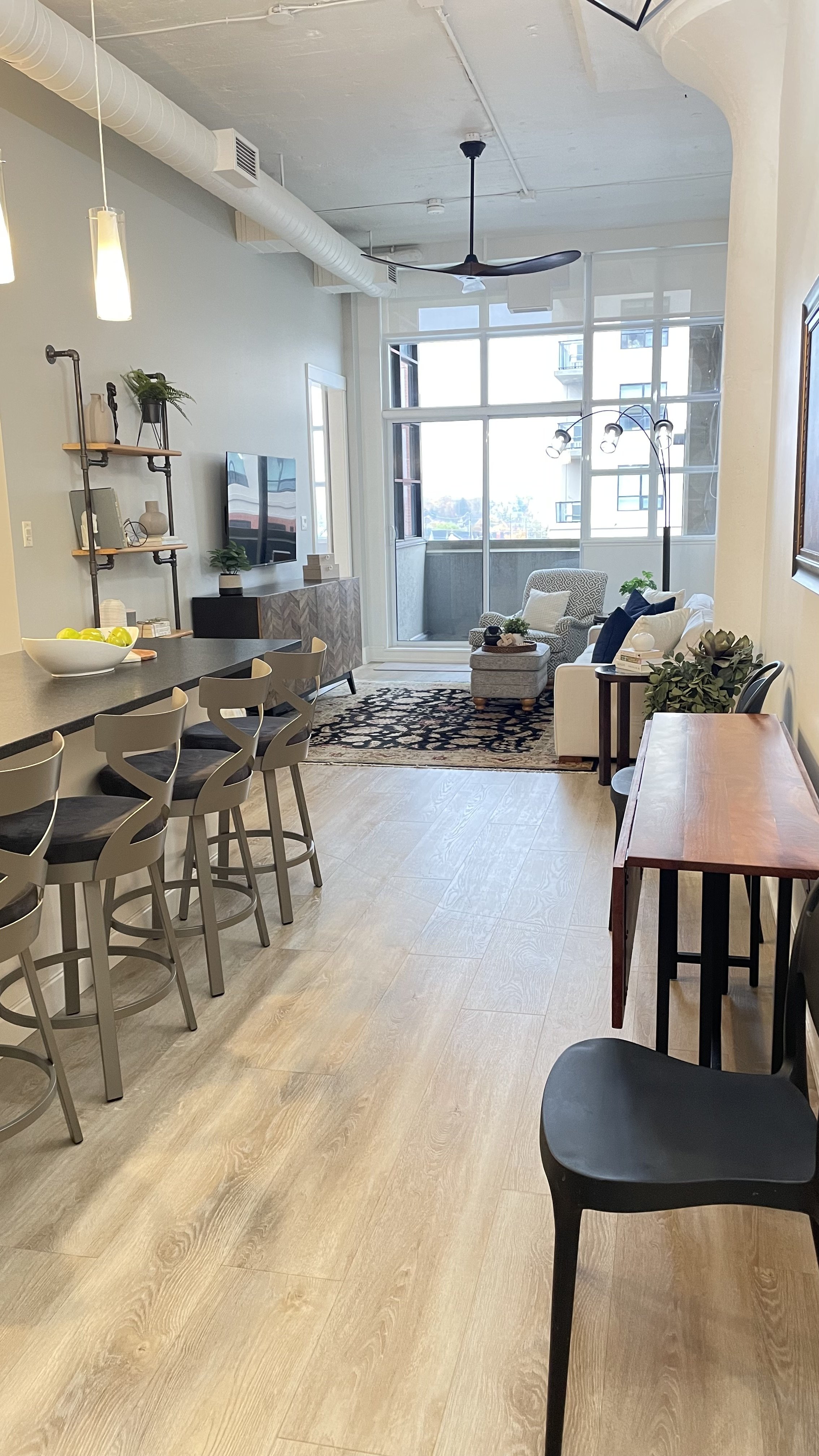The Ultimate Guide to Choosing the Best LVP (Luxury Vinyl Plank) Flooring
Luxury Vinyl Plank (LVP) and Luxury Vinyl Flooring (LVF) are becoming increasingly popular choices for homeowners looking for stylish, durable, and cost-effective flooring solutions. With an array of styles, sizes, and features to choose from, LVP and LVF offer a practical way to elevate your home’s design while meeting the demands of your lifestyle. In this guide, we’ll explore the essentials you need to know to select the best flooring for your needs.
Styles: From Planks to Tiles
When it comes to style, LVP and LVF have you covered. LVP mimics the look of hardwood planks, offering realistic wood grain patterns and textures in a variety of finishes—from rustic and distressed to sleek and modern. LVF, on the other hand, includes tiles that replicate the appearance of stone, ceramic, or other high-end materials, giving you even more design options.
Pro Tip: If you love the timeless elegance of wood, go for LVP. For a chic, contemporary vibe, consider LVF tiles that emulate natural stone or ceramic.
Sizes: Length and Thickness Matter
LVP and LVF are available in various sizes to suit your design vision and practical needs. Planks typically range in length from 36 to 60 inches and vary in width, allowing you to achieve the look of wide-plank hardwood or traditional boards. Tiles often come in standard dimensions, like 12x24 inches, but custom sizes are also available.
Thickness is another important consideration. Vinyl flooring ranges from 2 mm to 8 mm and beyond, but it’s the wear layer that primarily determines durability. While thicker planks may offer benefits such as better underfoot comfort and more realistic visuals, their durability depends on other factors like the wear layer and locking system. Thicker products often include enhanced cushioning, a sturdier locking system, and a premium feel underfoot, which can be worth considering if those features align with your priorities.
Pro Tip: 60" planks (or longer) offer a more realistic look and work best in long rooms.
Wear Layers: The Key to Longevity
The wear layer is crucial for extending the life of your flooring. Made of transparent PVC film, it sits on top of the photographic layer and adds resilience and durability. Common wear layer thicknesses include 6, 12, 20, or 22 mils. As you might expect, the thicker the wear layer, the more durable the flooring will be.
For residential use, a 12 mil wear layer often provides excellent performance. For high-traffic areas or homes with pets and kids, opting for 20 mil or higher can offer extra durability. In commercial settings, the 20-22 mil range is ideal to withstand heavy foot traffic.
Pro Tip: If you’re flooring a less frequented room, like a guest bedroom, a thinner wear layer might be sufficient, saving you money while still delivering a stylish and functional floor.
Durability: Built to Withstand Life’s Challenges
One of the biggest advantages of LVP and LVF is their durability. These floors are water-resistant (and often waterproof), making them an excellent choice for kitchens, bathrooms, and basements. They’re also highly scratch-resistant, standing up to the wear and tear of active households with kids and pets.
Where to Use LVP and LVF
LVP and LVF are versatile enough to be used in nearly any room of your home:
Living Rooms and Bedrooms: Create a warm and inviting atmosphere with wood-look LVP.
Kitchens and Bathrooms: Opt for waterproof LVF tiles to handle moisture and spills with ease.
Basements: Choose durable, moisture-resistant options to prevent warping and damage.
Pro Tip: For open-concept spaces, consider using the same flooring throughout to create a seamless, cohesive look.
How to Choose the Best Flooring for Your Home
Selecting the right LVP or LVF depends on three key factors: the room, your lifestyle, and your personal needs.
Room Considerations
High-Moisture Areas: Kitchens, bathrooms, and basements benefit from waterproof flooring.
Low-Traffic Areas: Bedrooms and formal dining rooms can handle thinner wear layers.
High-Traffic Areas: Entryways, living rooms, and playrooms require thicker wear layers for longevity.
Lifestyle Factors
Pets and Kids: Choose flooring with enhanced scratch resistance and stain-proof surfaces.
Allergies: Look for hypoallergenic materials and easy-to-clean finishes.
Noise Concerns: Thicker flooring or options with attached underlayment can help reduce noise.
Personal Needs
Design Preferences: Match the flooring style to your home’s aesthetic - from modern to traditional.
Budget: Luxury vinyl offers options at various price points without compromising quality.
Tips for Best Results
Inspect the Subfloor: Ensure it’s clean, dry, and level before installation.
Check the Installation Method: Some products use a click-lock system, while others require glue-down installation. Choose what works best for your DIY skills or budget for professional installation.
Consider Underlayment: Adding underlayment can improve comfort, noise reduction, and insulation (consult with a professional to review what the best option is for your space).
Ask About Warranties: Reputable brands offer warranties - opt for one with at least 10-15 years of coverage.
LVP and LVF provide a perfect blend of style, durability, and affordability, making them a smart choice for any home. By understanding the different styles, sizes, and features available, you can confidently choose flooring that enhances your space and meets the demands of your lifestyle.
Whether you’re updating a single room or renovating your entire home, LVP and LVF offer endless possibilities. Need help deciding? Contact us for personalized recommendations - we’re here to make your flooring dreams a reality!



